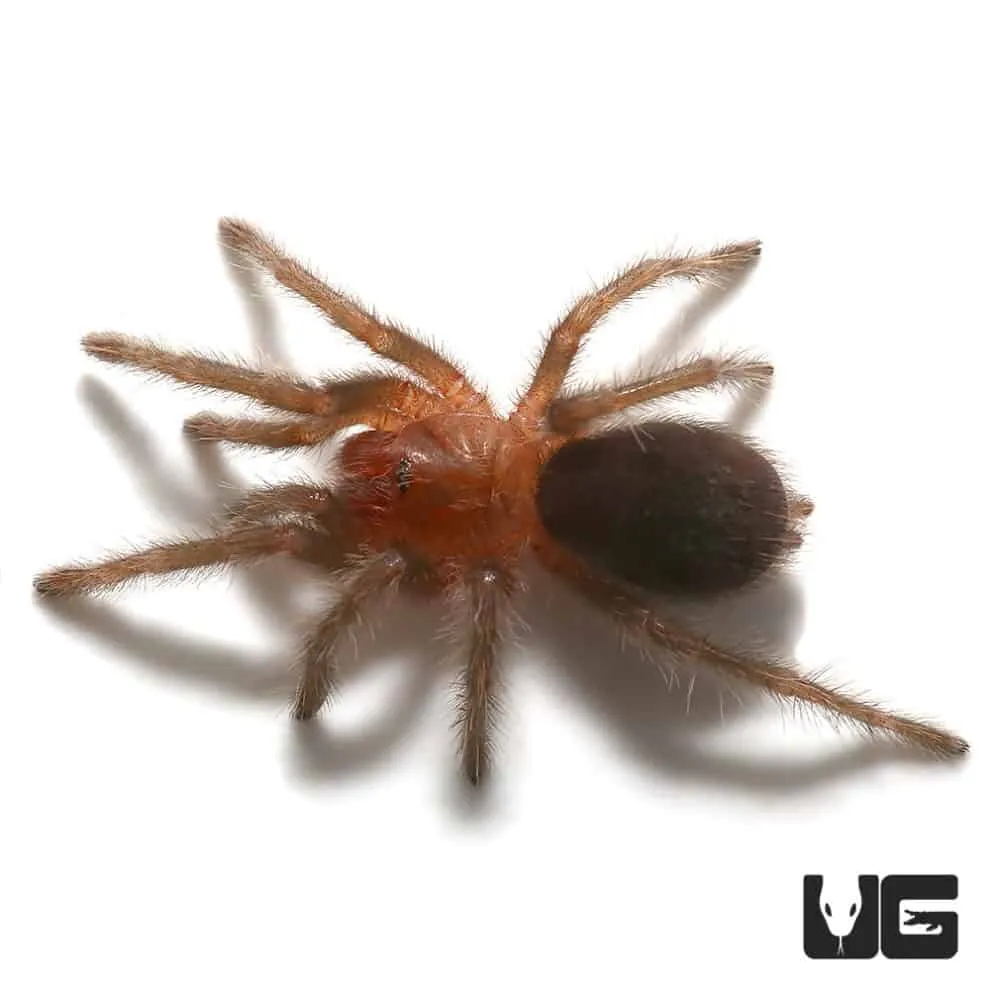What is a Full Grown Brazilian Black Tarantula?
The Brazilian Black Tarantula (Grammostola pulchra) is a captivating arachnid, sought after by tarantula enthusiasts worldwide. It is native to the grasslands of Southern Brazil and Uruguay. Known for its striking appearance and relatively docile temperament, this tarantula has become a popular choice for both novice and experienced keepers. The term “full grown” indicates an adult specimen, which has reached its maximum size and is capable of reproduction. Understanding the specifics of this fascinating creature is key to providing proper care and appreciating its unique characteristics.
Size and Appearance
As the name suggests, the Brazilian Black Tarantula is predominantly black in color, with some individuals exhibiting a subtle brownish hue. This uniformity of color gives it an elegant and imposing look. Full-grown females can reach a leg span of up to 6-7 inches (15-18 cm), while males tend to be slightly smaller. The body is covered in fine hairs (setae), which are sensory organs, and the chelicerae (mouthparts) are powerful, used for gripping prey. The overall appearance is robust and well-suited to its terrestrial lifestyle. The size and the general robust form can be seen on the tarantula.
Lifespan of a Full Grown Brazilian Black Tarantula
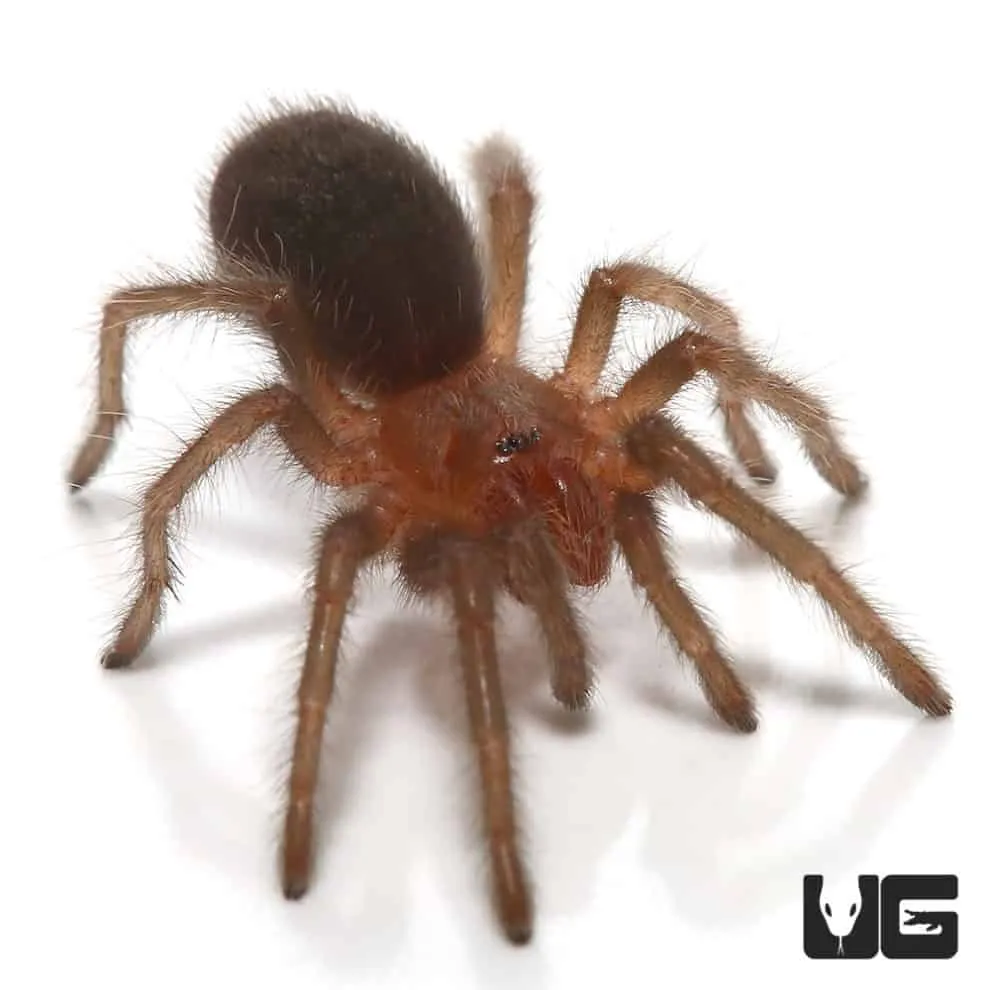
One of the remarkable aspects of the Brazilian Black Tarantula is its longevity. Females can live for an impressive 20-25 years or more, making them a long-term commitment for pet owners. Males, unfortunately, have a significantly shorter lifespan, typically living for only 5-8 years. This difference in lifespan is a common trait among many tarantula species. Proper care, including a suitable environment and diet, is crucial to maximizing the lifespan of these captivating creatures. Careful owners can help ensure their tarantulas live as long as possible.
Habitat and Natural Environment
In their natural habitat, Brazilian Black Tarantulas inhabit the grasslands of Southern Brazil and Uruguay. They are terrestrial spiders, meaning they live primarily on the ground. They create burrows or take refuge under rocks, logs, or other ground cover. The climate in these regions is generally warm and humid, which influences their environmental needs in captivity. Replicating their natural habitat is vital for their health and well-being. The setup should include a substrate that facilitates burrowing and a temperature gradient to ensure that the tarantula can self regulate.
Diet and Feeding Habits
Brazilian Black Tarantulas are carnivorous and primarily feed on insects in the wild. In captivity, they can be fed a variety of insects, including crickets, mealworms, roaches, and locusts. The size of the prey should be appropriate for the size of the tarantula; a good rule of thumb is to offer insects that are no larger than the tarantula’s body size. Feeding frequency depends on the age and size of the tarantula, with juveniles needing to be fed more often than adults. Providing fresh water is also essential for the tarantula’s survival. The image showcases a tarantula feeding.
101 Facts About Full Grown Brazilian Black Tarantulas
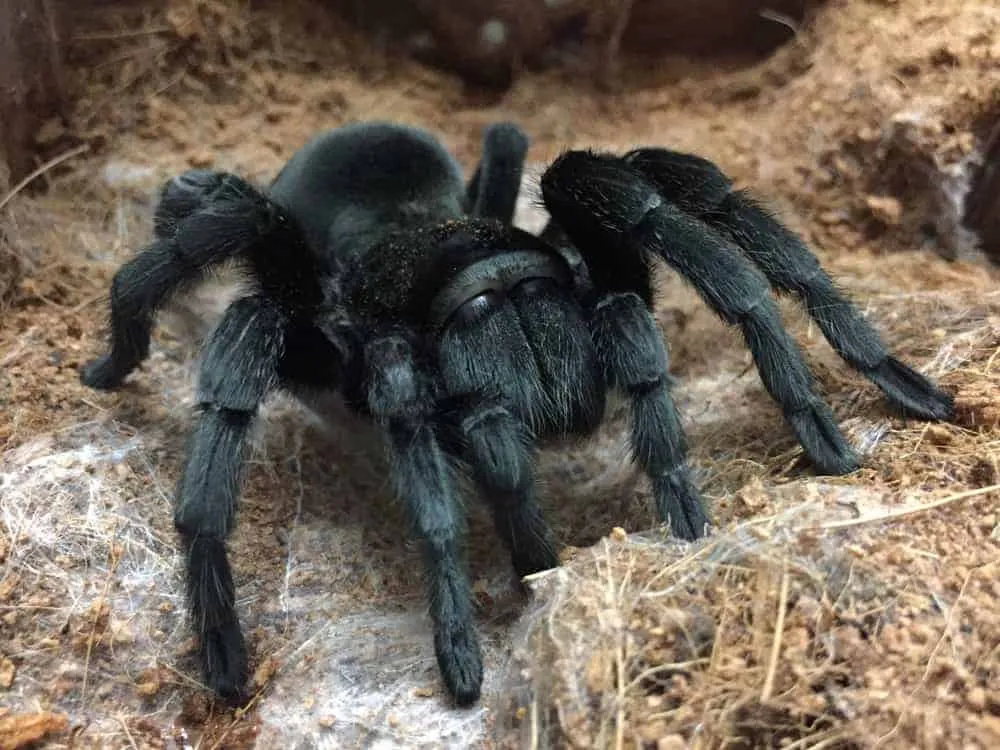
Basic Facts
- Scientific Name: Grammostola pulchra
- Common Name: Brazilian Black Tarantula
- Native to: Southern Brazil and Uruguay
- Type: Terrestrial
- Color: Primarily black
- Temperament: Generally docile
- Size (Female): Up to 6-7 inches (leg span)
- Size (Male): Slightly smaller
- Lifespan (Female): 20-25+ years
- Lifespan (Male): 5-8 years
Behavioral Facts
- Nocturnal hunters
- Create burrows or use existing shelters
- Typically docile but can bite if threatened
- Kick urticating hairs as a defense mechanism
- Molt periodically to grow and replace old exoskeletons
- Males wander in search of females
- Females may cannibalize males after mating
- Can fast for extended periods
- Often remain hidden during the day
- Can be surprisingly fast when hunting.
Physical Characteristics
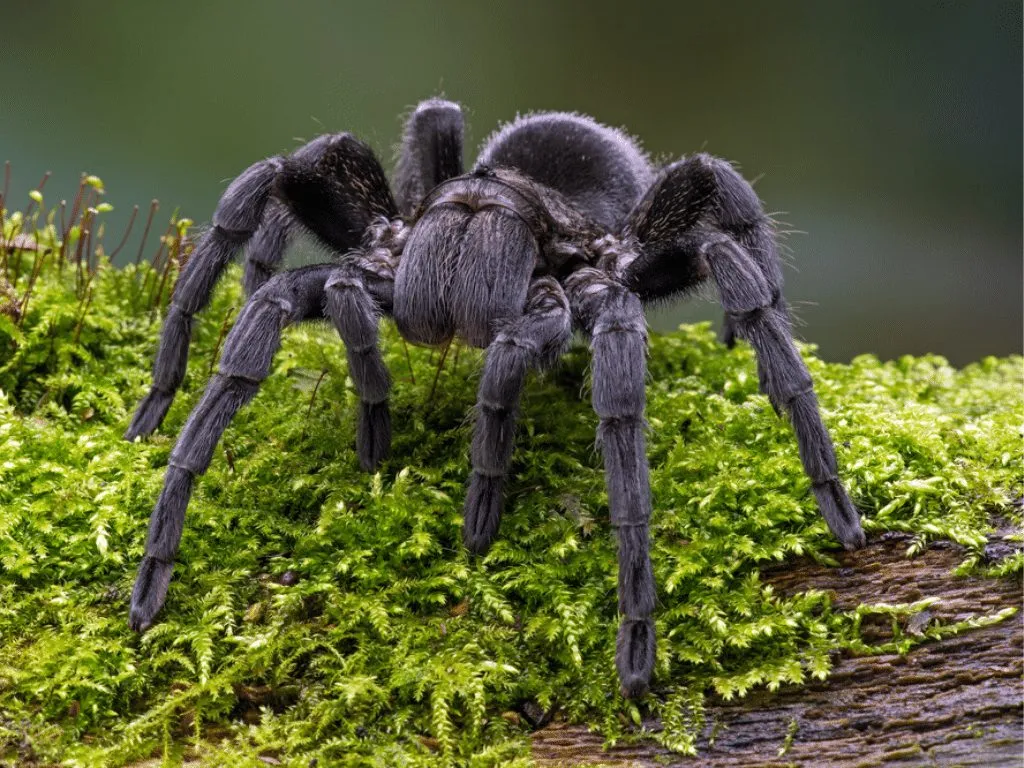
- Eight legs
- Two body segments (cephalothorax and abdomen)
- Two chelicerae (mouthparts) with fangs
- Pedipalps used for sensing and manipulating prey
- Covered in setae (hairs)
- Sensory hairs to detect vibrations and movement
- Book lungs for respiration
- Spinnerets to produce silk
- Exoskeleton made of chitin
- Relatively heavy compared to other tarantula species.
Breeding and Reproduction
- Males mature faster than females
- Males create sperm webs
- Males use pedipalps to transfer sperm to the female
- Females lay eggs in a silk egg sac
- Egg sacs can contain hundreds of eggs
- Spiderlings emerge from the egg sac
- Spiderlings go through several molts
- Cannibalism can occur among spiderlings
- Breeding is more successful in captivity
- Requires careful management of temperature and humidity.
Health and Care
- Provide a suitable enclosure
- Use a substrate that allows burrowing
- Maintain appropriate temperature and humidity
- Offer a varied diet of insects
- Provide a water dish with fresh water
- Clean the enclosure regularly
- Avoid handling unless necessary
- Monitor for signs of illness or injury
- Provide hiding places
- Handle with caution to avoid bites or urticating hairs.
Common Health Issues
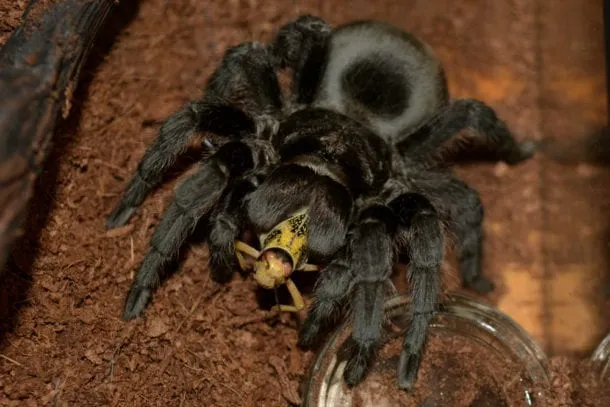
- Dehydration
- Parasites
- Mites
- Fungal infections
- Injuries during molting
- Abdominal rupture
- Loss of limbs
- Inability to molt
- Poor diet
- Stress from improper environmental conditions.
How to Handle a Full Grown Brazilian Black Tarantula
- Handle only when necessary
- Avoid sudden movements
- Handle over a soft surface
- Use a soft brush to gently guide the tarantula
- Do not force the tarantula to move
- Wash hands thoroughly before and after handling
- Be aware of the potential for bites
- Avoid contact with urticating hairs
- Observe the tarantula’s behavior
- Do not handle if the tarantula is stressed.
What to Feed a Full Grown Brazilian Black Tarantula
- Crickets
- Mealworms
- Roaches (Dubia roaches are a good option)
- Locusts
- Waxworms (in moderation)
- Pre-killed prey for safety
- Appropriately sized prey
- Avoid overfeeding
- Remove uneaten prey
- Supplement diet with calcium and vitamins (optional).
Enclosure Setup
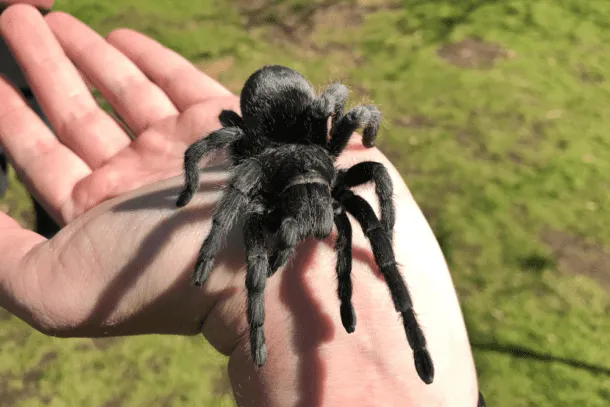
- Enclosure size appropriate for the tarantula’s size
- Secure lid to prevent escape
- Substrate: peat moss, coconut fiber, or a mixture
- Depth of substrate to allow burrowing
- Hiding place (e.g., cork bark, artificial cave)
- Water dish with fresh water
- Ventilation to prevent mold and humidity buildup
- Temperature gradient
- Avoid overcrowding
- Clean enclosure regularly.
Humidity and Temperature
- Maintain a temperature between 75-85°F (24-29°C)
- Provide a temperature gradient
- Humidity level of 60-70%
- Use a hygrometer to monitor humidity
- Mist the enclosure as needed
- Ensure proper ventilation
- Avoid direct sunlight
- Use a heat lamp or pad (with caution)
- Provide a water dish
- Monitor for mold or excessive condensation
- Adjust humidity and temperature based on the tarantula’s molting cycle.
Why a Full Grown Brazilian Black Tarantula as a Pet?
The Brazilian Black Tarantula offers a unique and captivating experience for the dedicated hobbyist. Their striking appearance, relatively docile nature, and impressive size make them a rewarding pet. However, it’s crucial to understand the commitment involved, including the need for a suitable enclosure, proper feeding, and responsible handling. Owning a tarantula is not for everyone, but those who are prepared to meet their needs can enjoy a fascinating and long-lived companion. They are generally calm and not aggressive, which makes them a good choice for someone who wants to start keeping tarantulas.
Pros and Cons of Ownership
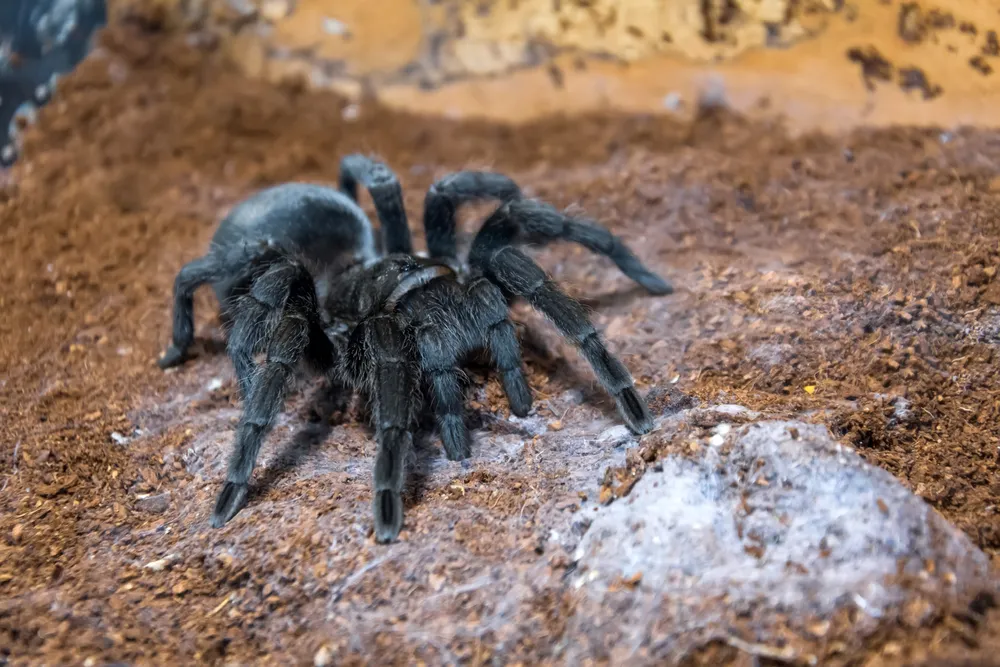
Pros
- Unique and fascinating pet
- Relatively low maintenance
- Long lifespan (females)
- Docile temperament
- Minimal space requirements Cons
- Can bite if provoked
- Urticating hairs can cause irritation
- Requires specialized care
- Not ideal for frequent handling
- Males have a short lifespan
Legality and Regulations
Before acquiring a Brazilian Black Tarantula, it’s essential to check local laws and regulations. Some areas may have restrictions on owning exotic animals. Ensure you comply with all relevant guidelines and obtain any necessary permits. Responsible ownership includes understanding the legal aspects of keeping a tarantula. Check the local authorities to ensure you can own one.
Where to Buy a Full Grown Brazilian Black Tarantula?
Brazilian Black Tarantulas can be found at reputable pet stores specializing in exotic animals, online breeders, and reptile shows. When purchasing, make sure to choose a reputable seller who can provide information on the tarantula’s origin, health, and care requirements. Inspect the tarantula carefully for any signs of illness or injury. Ask questions about its feeding history and molting schedule to ensure it is healthy. Buying from a reputable source helps ensure you receive a healthy tarantula. The image represents someone looking at a tarantula for purchase.
Conclusion
The Full Grown Brazilian Black Tarantula is a captivating species for tarantula enthusiasts. Its striking appearance, long lifespan, and relatively docile nature make it an appealing pet. Proper care, including a suitable environment, diet, and responsible handling, is essential for the tarantula’s well-being and longevity. Researching and understanding the needs of this species before acquiring one is crucial. With the right knowledge and dedication, owning a Brazilian Black Tarantula can be a rewarding experience, providing a unique glimpse into the world of exotic arachnids.
